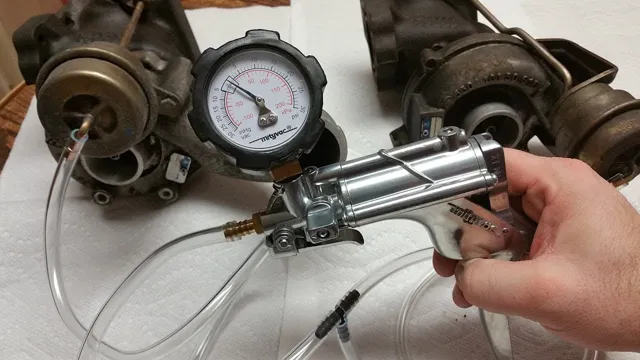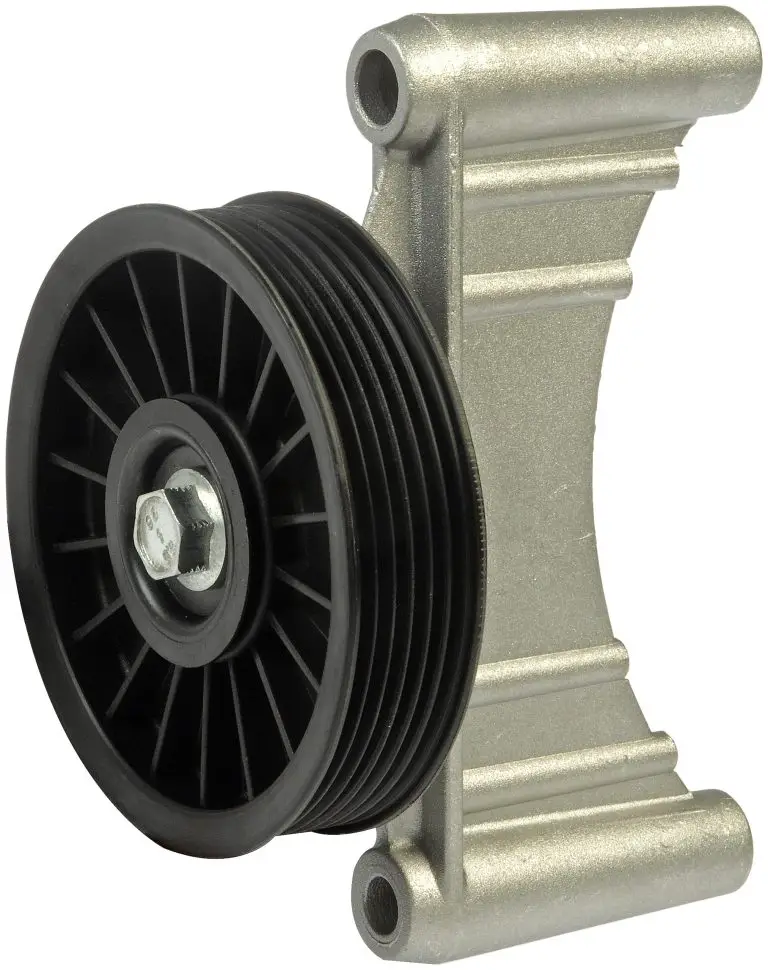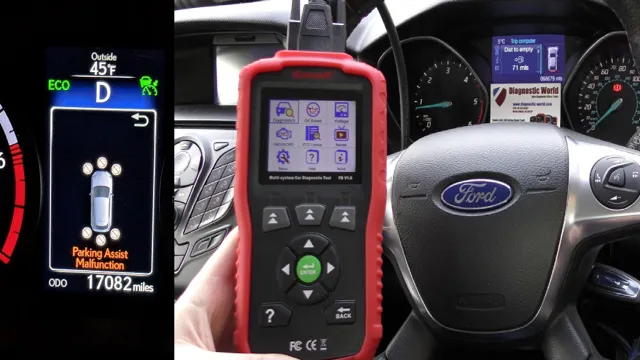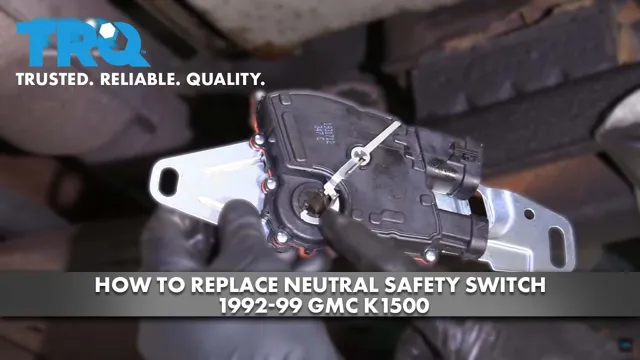Unlock the Secrets to Better Engine Performance: Learn How to Check Your Wastegate!
Have you been experiencing a decrease in power and acceleration in your vehicle? It may be due to a faulty wastegate. The wastegate is a crucial component of the turbocharger system in your car that helps regulate the boost pressure, keeping it within safe levels. If the wastegate is malfunctioning, it can cause your turbocharger to underperform, which can lead to poor fuel economy and reduced engine power.
Checking your wastegate can be an easy task that you can do yourself, without needing the help of a mechanic. In this article, we will provide you with step-by-step instructions on how to check your wastegate, identify any issues, and fix them in no time. So, buckle up, and let’s get started!
What is a Wastegate?
If you own a turbocharged vehicle, then you’re already familiar with the concept of a wastegate. A wastegate is a valve that controls the amount of boost pressure in the engine by diverting some exhaust gases around the turbocharger’s turbine wheel. This prevents the turbocharger from spinning too quickly and causing damage to the engine.
Checking a wastegate is a simple process that can be done with the engine off. Start by inspecting the wastegate opening and making sure it’s clean and free of debris. Next, use a vacuum pump to test the wastegate actuator to make sure it’s holding vacuum.
If it’s not, then the wastegate diaphragm is likely leaking and needs to be replaced. Additionally, if the wastegate is not opening and closing properly, then it might need to be adjusted or replaced altogether. By regularly checking your wastegate, you can ensure that your turbocharged engine is running at peak performance and avoid potential damage.
Explanation of a Wastegate and Its Function
A wastegate is an essential component of a turbocharged engine that helps manage boost pressure. When the pressure from the turbocharger becomes too high, the wastegate opens to divert some of the exhaust gasses away from the turbine wheel. This action reduces the amount of power generated by the turbocharger, which, in turn, lowers the boost pressure.
This not only prolongs the lifespan of the engine but also improves its performance. The wastegate achieves this by creating a vent that releases excess pressure, preserving the turbocharger and the engine’s longevity. Without a wastegate, the turbocharger would create too much boost pressure, which could damage the engine, leading to costly repairs.
Additionally, a wastegate regulates the boost pressure allowing for a smoother ride by avoiding turbocharger lag during acceleration. The wastegate, therefore, is a vital component of any turbocharged engine, and maintaining it is crucial for optimal performance.

Signs of a Faulty Wastegate
If your turbocharged vehicle is lacking in performance and power, there’s a chance that your wastegate could be the culprit. A wastegate is a valve that regulates the amount of boost produced by the turbocharger, preventing the engine from over-boosting and potentially causing damage. Signs of a faulty wastegate include a loss of power, excessive smoke coming from the exhaust, high engine temperatures, and unusual noises or vibrations.
To check the wastegate, start by inspecting the vacuum lines and hoses for any signs of wear or damage. You can also use a boost pressure tester to determine if the wastegate is responding correctly. If you suspect that your wastegate is faulty, it’s important to have it inspected and repaired as soon as possible to avoid further damage to your vehicle’s engine.
Loss of Power, Increase in Fuel Consumption
If you own a vehicle that has a turbocharger, you may experience decreased power and increased fuel consumption if the wastegate is faulty. The wastegate is a valve that regulates the amount of exhaust gas that enters the turbocharger, preventing it from spinning too fast and potentially damaging the engine. If the wastegate fails to open or close properly, it can cause the turbocharger to underperform, resulting in a loss of power and slower acceleration.
Additionally, fuel consumption may increase as the engine compensates for the lack of power by burning more fuel. It’s important to have the wastegate checked if you notice any of these signs, as driving with a faulty wastegate can cause further engine damage and reduce the lifespan of your vehicle.
Weird Noises from Engine
Have you ever heard weird noises coming from your engine and wondered what’s going on? One possible culprit could be a faulty wastegate. A wastegate is a valve that controls the amount of boost pressure in a turbocharged engine. When it’s not working properly, it can lead to an underboost or overboost condition, which can cause a host of issues, including strange sounds coming from the engine.
If you hear a high-pitched whistling sound or a chattering noise when you accelerate, it could be a sign that your wastegate is stuck open or closed. In some cases, you may also notice a loss of power or poor acceleration. This is because the wastegate is not controlling the boost pressure correctly, and the engine is not getting the amount of air it needs to perform at its best.
If you suspect that your wastegate is not working correctly, it’s important to have it checked out by a professional mechanic. They can diagnose the issue and recommend the appropriate repairs to get your engine running smoothly again. Don’t ignore any strange noises coming from your engine, as they could be a sign of a more significant problem that needs to be addressed promptly.
In conclusion, a faulty wastegate can cause weird noises to come from your engine and lead to poor performance. If you notice any strange sounds or a loss of power, it’s essential to have your car checked out by a professional mechanic to diagnose and repair the issue. Taking care of your car’s maintenance can help prevent more significant and costly problems down the road.
How to Check Wastegate Pressure
If you want to get the most out of your turbocharged engine, it’s important to ensure that the wastegate is properly calibrated. This can be easily done by checking the wastegate pressure. First, you’ll need a boost pressure gauge and a vacuum/boost source.
Begin by connecting the vacuum/boost source to the wastegate actuator and the boost pressure gauge to an intake manifold vacuum line. Next, start the engine and allow it to warm up, and then rev the engine to about 2,000 RPM. You should see a vacuum on the boost gauge at idle, and as you rev the engine, the boost pressure should increase.
If the boost pressure exceeds the preset limit, then the wastegate needs to be adjusted. Simply loosen the adjusting nut on the wastegate actuator and turn it in the correct direction until the desired boost pressure is achieved. Repeat the process until the wastegate pressure is properly calibrated.
Locating the Wastegate
When it comes to checking your car’s performance, one crucial component to consider is the wastegate. It regulates the boost pressure in the turbocharger, ensuring that the engine does not overwork and avoids any potential damages. To check the wastegate pressure, you must first locate it in your vehicle’s engine bay.
Look for a small valve in the turbocharger’s intake pipe or near the compressor wheel. Once located, you can use a boost pressure gauge to test the pressure levels. Ideally, the boost pressure should match your vehicle’s recommended specifications.
If the pressure is too low or too high, it may indicate a problem with the wastegate or other related components. Checking the wastegate pressure is a vital step in maintaining your car’s performance, ensuring it runs smoothly and efficiently on the road.
Remove the Vacuum Line
To check your wastegate pressure, first remove the vacuum line. This line is responsible for feeding vacuum to the wastegate actuator and controlling boost pressure. By removing it, you are essentially disconnecting the wastegate from the rest of the system, allowing you to test its functionality.
Next, attach a boost gauge directly to the wastegate actuator. This will give you an accurate reading of the wastegate pressure. Start the engine and bring it up to operating temperature.
Watch the boost gauge as you give it throttle. Ideally, you want the wastegate to open at a predetermined pressure level to prevent overboosting. If it opens too soon, you’re losing valuable power.
If it opens too late, you’re risking engine damage. By checking your wastegate pressure, you’ll ensure your engine is running at peak performance and avoid costly repairs down the road.
Insert Pressure Gauge
If you want to check the wastegate pressure in your car, you’ll need to insert a pressure gauge. This process isn’t difficult, but it does require some patience and attention to detail. First, locate the wastegate actuator and disconnect the vacuum line that leads to the actuator.
Next, connect a Tee fitting to the end of this line, and then attach the pressure gauge to the Tee fitting. Finally, start the engine and let it idle. After a few moments, you should be able to read the pressure on the gauge.
Ideally, you want to see a pressure that matches the recommended level for your particular make and model of car. If the pressure is too low, you may have a boost leak or a problem with your wastegate. On the other hand, if the pressure is too high, you’ll need to adjust the wastegate until it is in the correct range.
By using this simple method of checking wastegate pressure, you’ll be able to ensure that your car is operating at maximum efficiency and performance.
Test for Excessive Pressure
Wastegate pressure is a crucial factor in ensuring the proper functioning of your vehicle. If your wastegate is producing excessive pressure, it can lead to a host of problems, including engine damage, overheating, and poor fuel economy. Fortunately, testing for excessive pressure is relatively simple.
The first step is to ensure that all components of your engine are functioning correctly and that any potential issues have been addressed. Then, you can use a boost pressure gauge and a pressure release valve to measure the amount of pressure produced by your wastegate. If the pressure is too high, you may need to adjust the wastegate or replace it altogether.
By taking these steps, you can help ensure that your vehicle runs smoothly, safely, and efficiently.
Conclusion
In conclusion, checking your wastegate is crucial in maintaining the optimal performance of your turbocharged engine. Just like how a bird needs its wings to fly, your engine needs its wastegate to regulate boost pressure and keep everything under control. So, don’t ignore the signs and symptoms of a malfunctioning wastegate.
Instead, take charge of your engine’s health and perform a thorough wastegate check. Trust us, you’ll be soaring through the streets in no time.”
FAQs
What is a wastegate and what does it do in a turbocharged engine?
A wastegate is a valve that is designed to control the pressure of exhaust gases that drive the turbine wheel in a turbocharger. Its main function is to prevent the turbocharger from overboosting, which can cause damage to the engine.
How can I check if my wastegate is working properly?
You can test if your wastegate is working by performing a boost pressure test. Disconnect the wastegate actuator hose, apply compressed air to the actuator, and observe the wastegate movement. The wastegate should open and close smoothly and without any binding or sticking.
What are the symptoms of a faulty wastegate?
A faulty or stuck wastegate can cause several symptoms, such as reduced engine power, poor fuel economy, turbo lag, or lack of boost pressure. You may also notice black smoke coming from the exhaust, indicating an excess of unburned fuel.
Can a wastegate be repaired or replaced?
Yes, a wastegate can be repaired or replaced if it is not functioning properly. However, it is important to diagnose the root cause of the wastegate failure to prevent it from recurring. Repairs may include replacing the actuator, cleaning or lubricating the valve, or replacing damaged components. If the wastegate is beyond repair, it can be replaced with a new one.





